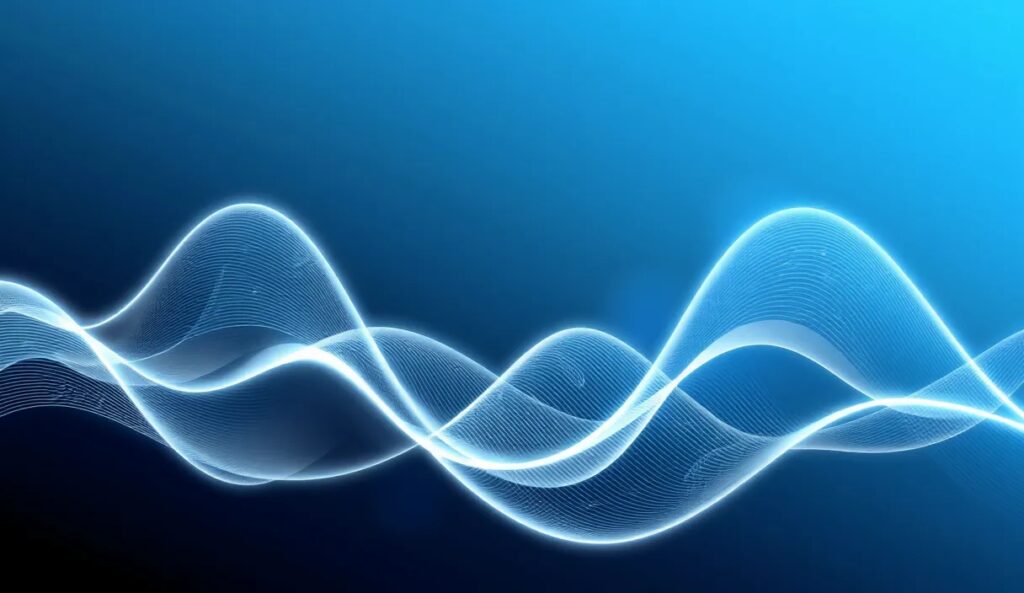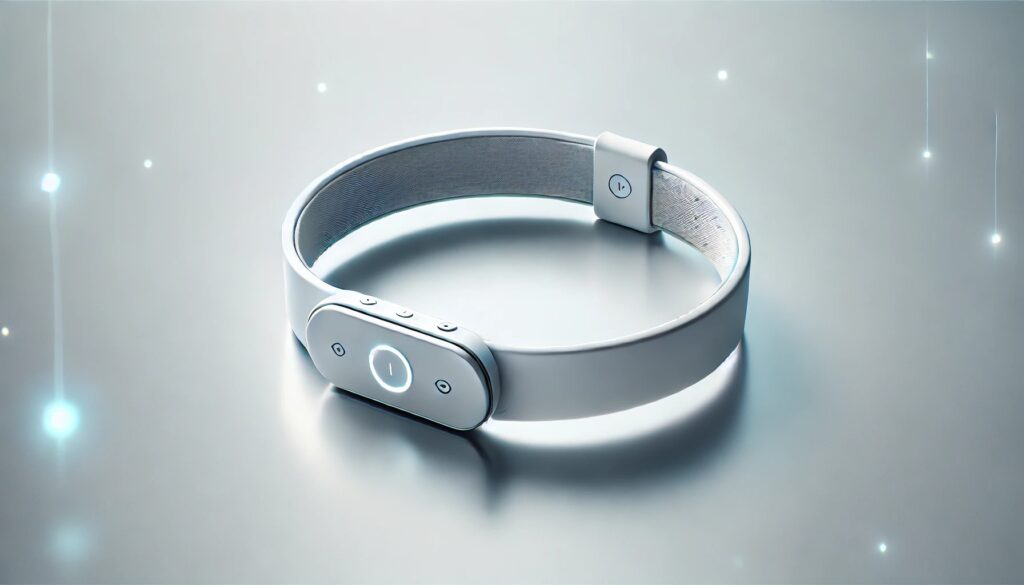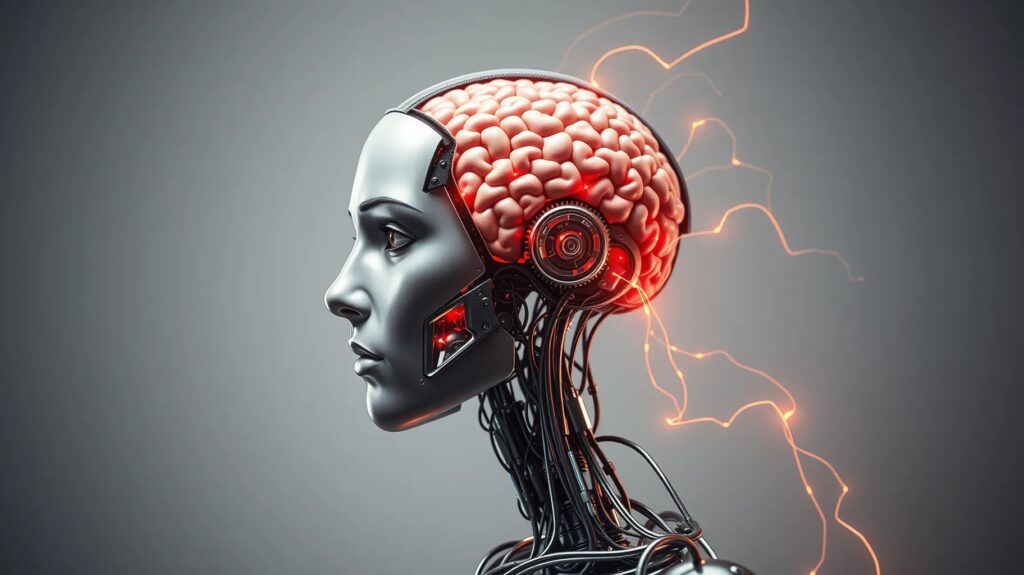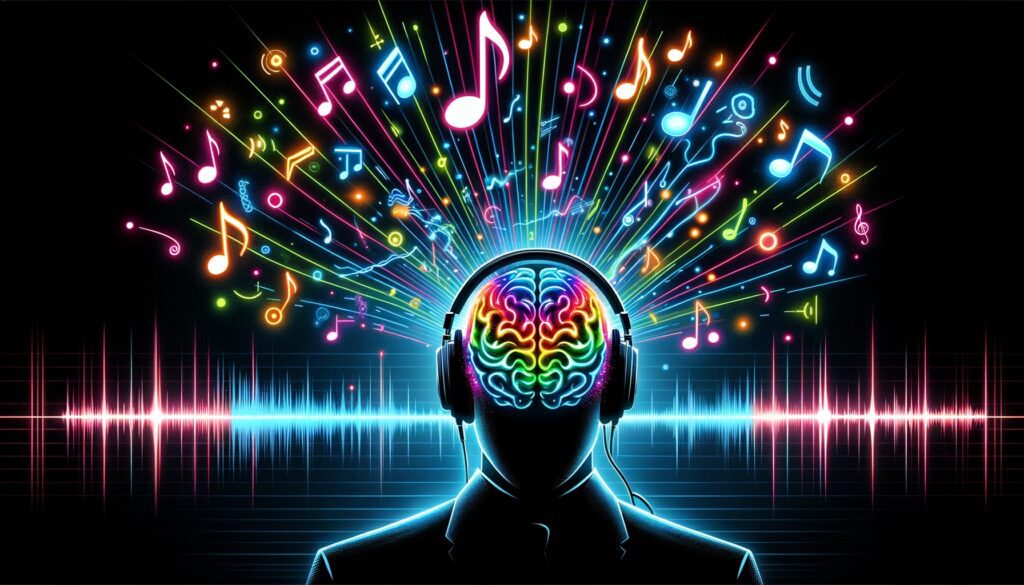
Bbrainwave monitoring and AI promise a revolutionary way to enhance our concentration and productivity. This cutting-edge tech combo could transform everything from workplaces to meditation practices.
Here’s how these innovations are shaping the future of focus enhancement.
Understanding Brainwaves and Their Impact on Focus
What Are Brainwaves, Exactly?
Brainwaves are the rhythmic electrical impulses produced by neurons in the brain. These signals fall into five categories:
- Delta waves (deep sleep)
- Theta waves (creativity, relaxation)
- Alpha waves (calm, alert)
- Beta waves (active thinking)
- Gamma waves (high-level cognition)
Each wave correlates with different mental states. For instance, alpha waves are linked to deep focus and meditation.
The Science Behind Focus Enhancement
When brainwaves operate out of sync, focus suffers. AI-powered devices monitor these patterns in real time, helping users adjust their states for maximum productivity.
Tech like EEG headsets detects shifts in brainwave activity and triggers adaptive responses—like calming sounds for overactive beta waves.
Why Does This Matter for Productivity?
Brainwave synchronization optimizes mental clarity. By aligning your brainwaves, you could eliminate mental fog and distractions, boosting efficiency at work or study.
How AI Transforms Brainwave Monitoring
Advanced Algorithms for Real-Time Analysis
AI algorithms decode the complex patterns of your brainwaves. This enables personalized feedback. For example, some devices analyze your beta and gamma wave activity, then guide you into a flow state.
These tools also identify patterns unique to each user. That’s a game-changer for focus training—no one-size-fits-all solutions here.
Adaptive Feedback: A Personalized Brain Coach
AI not only reads your mind but also coaches it. Tools like AI-powered apps can suggest relaxation exercises or guide meditation sessions to recalibrate your mental state. Over time, these devices “learn” your optimal focus patterns.
The Power of AI to Predict and Prevent Burnout
By spotting early signs of mental fatigue—like irregular beta wave spikes—AI systems can prevent burnout. Notifications might prompt breaks or recommend deep breathing exercises before productivity crashes.
Applications of Brainwave Monitoring for Focus

Workplace Performance and Team Collaboration
Imagine teams using brainwave-monitoring devices to ensure they’re in sync during key meetings. AI could analyze group dynamics, improving collaboration and reducing misunderstandings.
Education and Personalized Learning
Students could wear EEG headbands to track focus levels during lessons. AI would adjust teaching methods, ensuring concepts are absorbed effectively.
Gaming and Esports Optimization
Gamers already use this technology to hone reflexes and stay in peak performance zones during tournaments. AI-enhanced brainwave monitoring fine-tunes gamma wave activity for sharper decisions.
Revolutionizing Wellness with Brainwave AI
Mindfulness and Meditation Reinvented
Brainwave monitoring is transforming mindfulness. Tools like EEG headsets and meditation apps integrate AI-guided feedback, enabling users to achieve deeper states of relaxation faster. Imagine meditating with real-time data showing your theta wave activity rising as you enter a state of calm.
AI even provides tailored soundscapes or binaural beats that stimulate alpha waves, perfect for stress reduction.
Sleep Enhancement and Recovery
Struggling with sleep? Brainwave monitoring can help. Devices track delta wave patterns, identifying disruptions in your sleep cycles. AI generates recommendations—like adjusting bedtime or reducing screen exposure—to improve restorative sleep.
The result? Better rest, sharper focus, and higher productivity.
Mental Health and Cognitive Therapy
For those dealing with anxiety or ADHD, brainwave monitoring paired with AI delivers actionable insights. By identifying irregularities in beta wave patterns, these tools support therapeutic interventions like neurofeedback. Over time, users gain greater control over their mental states.

Consumer-Friendly Devices on the Market
Affordable EEG Wearables
The rise of portable EEG devices makes brainwave monitoring accessible to everyday users. Tools like Muse or NeuroSky combine affordability with cutting-edge AI, making personal focus enhancement easier than ever.
Smart Home Integration
AI-driven brainwave tools now sync with smart home devices. Lights dim, music plays, or thermostats adjust automatically based on your focus levels. Your environment becomes a productivity booster.
The Rise of Brainwave Apps
Apps like Brain.fm integrate AI-powered soundtracks tuned to align brainwaves for tasks like work, study, or relaxation. These user-friendly solutions complement EEG wearables for a seamless focus-enhancement experience.
The Future of Brainwave Monitoring and AI
Emerging Technologies on the Horizon
The next generation of brainwave monitoring devices will go beyond wearables. Researchers are exploring implantable sensors that offer even more accurate readings and uninterrupted feedback. These devices could potentially integrate with AR glasses or VR headsets for immersive focus enhancement.
AI advancements will also improve the precision of neurofeedback systems. Future tools could predict your optimal mental state for various activities, from deep work to relaxation.
Integration with Augmented Reality (AR)
AR environments paired with brainwave monitoring could revolutionize productivity. Imagine virtual workspaces that adapt lighting, visuals, and sounds based on your focus levels.
For instance, a rise in beta waves could prompt the AR system to display calming imagery, keeping you balanced during intense tasks.
AI and Brainwave-Driven Neuroprosthetics
Emerging fields like neuroprosthetics will harness brainwave data for more than just focus. Advanced prosthetics already use brain signals to control movements, and AI-enhanced brainwave monitoring could refine this technology for smoother, more natural interactions.

Ethical Considerations and Privacy Challenges
The Risk of Brain Data Misuse
Brainwave monitoring raises ethical concerns about privacy. Your brain activity is deeply personal, and the idea of sharing this data—even with AI—can feel invasive. Misuse by corporations or hackers could lead to serious breaches of mental privacy.
Consent and Transparency in AI Applications
It’s essential for companies to ensure users fully understand how their data is collected and used. Clear consent protocols and transparent algorithms will play a crucial role in building trust.
Equitable Access to Technology
As brainwave tech evolves, cost could become a barrier for many users. Advocates are calling for affordable solutions to ensure these advancements benefit a broader population—not just the wealthy.
Brainwave Monitoring and AI’s Hidden Potential
Unlocking the Flow State with AI Precision
The elusive “flow state”—that sweet spot of peak focus and effortless productivity—is notoriously difficult to achieve. AI-enhanced brainwave monitoring makes this state more accessible by continuously tracking gamma and alpha wave activity.
Here’s the exciting part: AI doesn’t just detect when you’re in flow; it predicts how to get you there. For example, if you’re on the brink of distraction, the system might introduce binaural beats or adjust your work environment. This tailored feedback closes the gap between effort and achievement.
Unexpected Applications in Sports Psychology
Elite athletes have begun adopting these technologies to master focus and recovery cycles. Devices monitor theta waves during mindfulness exercises, allowing athletes to maintain composure under pressure. Over time, this technology could redefine mental training regimens, leveling up sports performance globally.
The Surprising Role of Nutrition in Brainwave Optimization
Brainwave activity isn’t just influenced by stress or focus levels. What you eat directly impacts your ability to reach peak mental states. For example:
- Omega-3 fatty acids boost gamma wave activity, essential for high-level cognitive processing.
- Caffeine spikes beta waves, aiding alertness but potentially overloading your brain without moderation.
AI-powered tools could one day sync with wearable health monitors to recommend diet changes for optimizing focus. Imagine a smart app suggesting walnuts before creative tasks or chamomile tea to ease overactive beta waves after work.
Synergy with Gut-Brain Axis Insights
Emerging research links gut health to brainwave activity, with the gut microbiome influencing serotonin production and mental clarity. In the future, brainwave-monitoring AI might integrate with microbiome analysis tools, offering even deeper personalization.
Brainwave Biometrics: The Future of Security?
What if your unique brainwave patterns could replace passwords? Brainwave biometrics are already being explored as a highly secure and almost impossible-to-forge identification system. While the technology isn’t mainstream yet, brainwave IDs could revolutionize everything from unlocking devices to safeguarding sensitive data.
AI and Emotional Intelligence Monitoring
Imagine AI systems detecting stress signals in your brainwave patterns during online transactions. Instead of letting anxiety influence decisions, the system might pause and offer calming prompts. This combination of emotional intelligence and brainwave monitoring could redefine cybersecurity protocols and user experience design.
AI’s Role in Dream Engineering and Subconscious Productivity
The connection between brainwave monitoring and dreams is one of the most exciting frontiers. By tracking theta and delta waves, AI can guide your dreams for subconscious problem-solving. This concept, known as targeted dream incubation (TDI), could help you rehearse presentations, generate creative ideas, or even practice new skills while you sleep.
Dream-Driven Creativity Boosts
Innovators like Salvador Dalí and Thomas Edison already understood the creative power of dream states, often using micro-naps to harness fleeting ideas. With AI-enhanced brainwave tracking, this process could become intentional, turning your nightly rest into a productivity hack.
Social Impact: Rethinking Focus in a Distracted World
Focus-enhancing technologies won’t just affect individuals—they could reshape society. The ability to consistently monitor and adjust mental states might lead to more empathetic communication and collaboration in workplaces.
Combatting the “Attention Economy”
In an age dominated by endless notifications and content overload, brainwave monitoring could act as a personal guardian. AI might block interruptions during deep work, ensuring you stay immersed in what truly matters. This could redefine how we interact with technology, steering us toward healthier habits.
Ethical Design for Inclusive Impact
The potential to enhance focus and productivity on a global scale is immense. However, achieving this requires equitable access and safeguards against exploitation. Companies developing brainwave-enhancing tools must prioritize inclusivity and ethical data practices to avoid creating further divides in society.
These deeper layers of brainwave monitoring and AI hint at a future where focus is no longer a struggle but a state we can enter with precision. What do you think—should we explore real-world case studies or tech comparisons next?
Comparing Today’s Brainwave Monitoring Tools: Which is Right for You?
The market is bursting with devices and apps that integrate brainwave monitoring and AI. Choosing the right one depends on your needs—whether it’s productivity, relaxation, or cognitive improvement. Let’s compare some of the top tools currently available.

EEG Wearables: The Powerhouses of Brainwave Monitoring
Muse 2: Best for Mindfulness and Meditation
Overview:
Muse 2 is a lightweight EEG headband designed for meditation enthusiasts. It tracks alpha, beta, and theta waves, offering real-time feedback through a companion app.
Features:
- Guided meditation sessions with auditory cues.
- Data-driven insights on stress and relaxation levels.
- Tracks heart rate, body movement, and breath.
Best For: Beginners exploring focus enhancement through meditation.
Limitations: Limited features for tasks like work or study.
Price Range: $250-$300.
NeuroSky MindWave Mobile 2: Best for Cognitive Training
Overview:
NeuroSky offers a compact, affordable device focusing on brain training and education. It reads attention and meditation levels via simple EEG sensors.
Features:
- Pairs with brain-training games for focus enhancement.
- Portable and easy to use with minimal setup.
- Compatible with multiple platforms, including smartphones.
Best For: Students or professionals seeking simple, task-focused feedback.
Limitations: Lacks the advanced features of premium headsets.
Price Range: $100-$120.
Check out NeuroSky here.
Apps Using AI for Brainwave Alignment
Brain.fm: AI-Powered Focus and Relaxation
Overview:
Brain.fm uses AI-generated music to optimize brainwave activity without requiring an EEG headset. Tracks are designed to influence alpha and beta waves for productivity or relaxation.
Features:
- Music scientifically tested to enhance focus.
- Sessions for work, sleep, and meditation.
- No external hardware required.
Best For: Quick, low-commitment focus enhancement.
Limitations: Lacks detailed brainwave tracking.
Price Range: $6.99/month or $49.99/year.
MyndPlay Pro: Immersive Neurofeedback
Overview:
MyndPlay combines EEG monitoring with neurofeedback games. Users interact with videos and apps using their brainwaves, promoting focus and relaxation.
Features:
- Works with popular EEG headsets like NeuroSky.
- Tracks attention, relaxation, and emotional responses.
- Includes interactive games and media for engaging feedback.
Best For: Gamers and creatives looking to gamify focus improvement.
Limitations: Requires a separate EEG device.
Price Range: $100-$150 for software; hardware costs extra.
Cutting-Edge Innovations for Professionals
Kernel Flow: Best for Advanced Neuroscience
Overview:
Kernel Flow is a wearable that uses time-domain functional near-infrared spectroscopy (TD-fNIRS) to measure brain activity. Unlike standard EEGs, it captures deeper neural processes.
Features:
- Tracks real-time cognitive activity with high precision.
- Suitable for clinical and professional research.
- Lightweight and non-invasive design.
Best For: Advanced users or researchers needing high-resolution data.
Limitations: Expensive and not consumer-focused.
Price Range: By consultation (costs can exceed $10,000).
Emotiv Insight: Best for All-in-One Productivity
Overview:
Emotiv Insight offers a sleek EEG headset that tracks brainwaves and mental performance. Its app provides actionable insights for focus, relaxation, and productivity.
Features:
- Tracks focus, stress, engagement, and relaxation levels.
- Offers a cognitive benchmark to monitor improvements.
- Cloud-based analytics for easy access to your data.
Best For: Professionals wanting both simplicity and depth.
Limitations: Pricey for casual users.
Price Range: $300-$400.
Key Takeaways: How to Choose the Right Tool
- For Beginners: Start with affordable tools like NeuroSky or apps like Brain.fm. These provide simple ways to explore brainwave optimization.
- For Meditation: Muse 2 is ideal, thanks to its focus on relaxation and stress management.
- For Professionals: Emotiv Insight and Kernel Flow offer powerful analytics for in-depth focus and mental performance tracking.
- For Gamification: MyndPlay is perfect for creative minds who enjoy interactive neurofeedback.
| Tool/App | Key Features | Best For | Limitations | Price |
|---|---|---|---|---|
| Muse 2 | – Tracks alpha, beta, theta waves – Real-time feedback for meditation – Heart rate & breath tracking | Beginners exploring mindfulness & meditation | Limited productivity applications | $250-$300 |
| NeuroSky MindWave | – Focus on brain-training games – Reads attention & meditation levels – Cross-platform compatibility | Students & casual users improving focus | Basic functionality, lacks precision | $100-$120 |
| Brain.fm | – AI-generated music for brainwave alignment – Modes for work, sleep, and relaxation – No hardware needed | Quick, low-cost focus solutions | No detailed brainwave tracking | $6.99/month or $49.99/year |
| MyndPlay Pro | – Interactive games powered by brainwaves – Tracks attention & relaxation – Pairs with NeuroSky headsets | Gamers & creatives who enjoy gamification | Requires separate EEG device | $100-$150 (software only) |
| Kernel Flow | – Advanced TD-fNIRS for deep neural activity – High-resolution cognitive data – Non-invasive wearable | Researchers & neuroscience professionals | Extremely expensive, not for casual use | Custom (>$10,000) |
| Emotiv Insight | – Tracks focus, stress, and engagement – Cloud-based analytics – Sleek, lightweight design | Professionals needing comprehensive tracking | Pricey for casual users | $300-$400 |
How to Use This Table
- If you’re a beginner or on a budget, start with NeuroSky or Brain.fm.
- For meditation and mindfulness, Muse 2 stands out.
- Professionals or researchers may benefit most from the detailed analytics of Emotiv Insight or Kernel Flow.
- If you love interactive and fun learning experiences, MyndPlay Pro is an engaging choice.
The Path Ahead for Focus Enhancement
The intersection of brainwave monitoring and AI is still in its infancy, but the potential is enormous. From improving productivity to revolutionizing mental health treatment, this technology could redefine how we engage with our minds.
By balancing innovation with ethical practices, brainwave AI systems could usher in a future where achieving focus is as simple as wearing a headset or opening an app.
Resources
Research and Insights
- “Understanding Brainwaves” – Verywell Mind
Overview of different brainwave types and their roles in mental states. - “The Neuroscience of Focus” – Scientific American
Dive into how focus works at a neural level and the science behind distractions.
Read on Scientific American - “AI in Mental Health” – Nature Neuroscience
Scholarly articles on how AI enhances brainwave applications for therapy and cognition.
Access Nature Neuroscience
Tools and Devices
- Muse Official Website
Explore Muse EEG headsets for meditation and mental clarity.
Visit Muse - NeuroSky Store
Learn about NeuroSky headsets and their applications for cognitive training. - Kernel Flow
Advanced brainwave monitoring solutions for professionals and researchers.
Learn More - Emotiv Insight
Comprehensive brainwave tracking for work, stress management, and engagement.
Explore Emotiv
Apps and Software
- Brain.fm
AI-generated music to enhance focus, relaxation, and sleep.
Explore Brain.fm - MyndPlay
Interactive neurofeedback games and media experiences.
Visit MyndPlay
Educational Resources
- Coursera: Neuroscience and Brain Function Courses
Online courses from top universities to better understand brain function and its applications.
Explore Courses - MIT Technology Review: AI and Neuroscience
Latest breakthroughs and trends at the intersection of AI and brainwave technology.
Read MIT Tech Review - PubMed: Brainwave and AI Research
Access peer-reviewed papers and clinical studies on brainwave monitoring and AI.
Search PubMed




